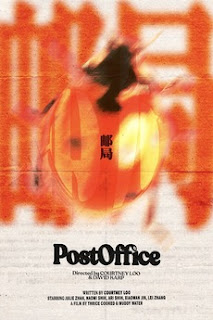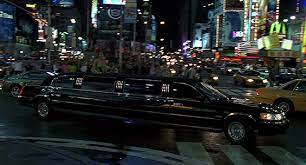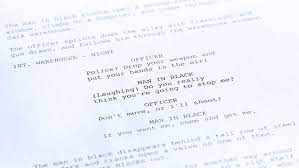Post Office - A Short Film Drama
Short film description:
When a Chinese-American mother and her children come upon a seemingly abandoned little girl, their attempts to help have unforeseen consequences.
Sound:
As common in the drama genre, dialogue is incredibly prevalent throughout this short. The whole story is told through the voice, but what this short does differently is the use of different languages and dialects. When the little girl is found, all she speaks is Chinese. In her repetition of the little girl's words, the mom only becomes more and more confused. The way the mom speaks to the police officers versus towards the mom of the little girl shows the fear and misunderstanding of the situation. Moreover, the way the man talks to the daughter when they're in the car, his condescending tone shows the rude and racist intent in his words. The words themselves hurt as well, with him saying "Ni-Hao" to the daughter, but the tone of voice is what really makes it hurt, to the point that even if the little girl didn't understand what he was saying, she could understand that it was meant as an insult.
Mis-en-Scene:
The character's outfits are all different, depending on their economic status. There is a huge difference between the mom's daughter, who is all dressed up with many accessories, and the girl who they find on the street, who is dirty and wearing the bare minimum. This is also seen in the two moms, where the Chinese-American woman is freshly dressed, almost to the nines. The mom on the side of the road looks disheveled like she picked out what she could that day. The stark differences in economic status become even more prevalent when the police officer shows up in uniform, with his freshly polished badge.
The police officer did an amazing job of acting as well, with his apprehension towards the mom on the side of the road being seen immediately. The Chinese-American mom acts like the stereotype of an American, taking her kids to school in a nice car, but becomes distracted while driving. This is like many have before, but it gives her a more well-rounded personality, rather than just being the typical suburban mom. She cares for others, stopping on the side of the road for a lost child even though she has somewhere to be, and doing her best to explain to the mom on the side of the road what the police officers were saying. At the climax, we see the most from the mom on the side of the road and her daughter, as they cry and the daughter screams like anyone would. Such an intense emotion being shown when the rest of the film stayed mellow in terms of emotion gave this scene incredible tension and clearly differentiated it from anything else portrayed in the rest of the film.
Most of the lighting is natural, being bright since it's daylight. When the light darkens up, it correlates to when the daughter is experiencing racial discrimination. It created a shift in the tone of the film and helped the viewer understand the true extent of the tension between the daughter and the man in the car. The lighting is also less harsh in the closing scene of the film, being set in a school hallway. The mom is dealing with the consequences of having empathy in a country that discourages it, and the tenseness in her mind is seen in the gray tones of the lighting.
Editing;
Most of the editing are simple eye line matches in collaboration with the dialogue. Where the editing is at its strongest is both in the car scenes and right after the climax of the film. In the car, the eye-line matches help to make the car seem bigger and like a more developed space than it actually is. Rather than having one long shot showing the family in the car, the director chose to continue cutting between the mom, daughter, and son as they spoke. This gave the feeling that the viewer was truly in the car, watching all of these interactions take place. As for the end of the film, the jump in time between seeing the mom being arrested, the screaming taking place, and the quiet serenity of the school hallway, helped to further the differences between the Chinese-American mom and the mom on the side of the road, showing the viewer that the only thing they had in common was their Chinese heritage.
Overall, while this film was incredibly heart-wrenching, I loved how it portrayed the issues of immigration and the problems with police officers. I was able to immediately connect this film to many of my own personal experiences and what is currently going on in the world. While I'm experiencing similar topics to those covered in the film, it was a great way to be able to see the world through a different lens. I do have to say, however, that I wish there was more information on the mom and daughter on the side of the road. The cut from the arrest to the scene in the school was so abrupt, it left me yearning for more information about what happened to the family. I can still appreciate, however, that it makes it so realistic.
Short film description:
When a Chinese-American mother and her children come upon a seemingly abandoned little girl, their attempts to help have unforeseen consequences.
Sound:
As common in the drama genre, dialogue is incredibly prevalent throughout this short. The whole story is told through the voice, but what this short does differently is the use of different languages and dialects. When the little girl is found, all she speaks is Chinese. In her repetition of the little girl's words, the mom only becomes more and more confused. The way the mom speaks to the police officers versus towards the mom of the little girl shows the fear and misunderstanding of the situation. Moreover, the way the man talks to the daughter when they're in the car, his condescending tone shows the rude and racist intent in his words. The words themselves hurt as well, with him saying "Ni-Hao" to the daughter, but the tone of voice is what really makes it hurt, to the point that even if the little girl didn't understand what he was saying, she could understand that it was meant as an insult.
Mis-en-Scene:
The character's outfits are all different, depending on their economic status. There is a huge difference between the mom's daughter, who is all dressed up with many accessories, and the girl who they find on the street, who is dirty and wearing the bare minimum. This is also seen in the two moms, where the Chinese-American woman is freshly dressed, almost to the nines. The mom on the side of the road looks disheveled like she picked out what she could that day. The stark differences in economic status become even more prevalent when the police officer shows up in uniform, with his freshly polished badge.
The police officer did an amazing job of acting as well, with his apprehension towards the mom on the side of the road being seen immediately. The Chinese-American mom acts like the stereotype of an American, taking her kids to school in a nice car, but becomes distracted while driving. This is like many have before, but it gives her a more well-rounded personality, rather than just being the typical suburban mom. She cares for others, stopping on the side of the road for a lost child even though she has somewhere to be, and doing her best to explain to the mom on the side of the road what the police officers were saying. At the climax, we see the most from the mom on the side of the road and her daughter, as they cry and the daughter screams like anyone would. Such an intense emotion being shown when the rest of the film stayed mellow in terms of emotion gave this scene incredible tension and clearly differentiated it from anything else portrayed in the rest of the film.
Most of the lighting is natural, being bright since it's daylight. When the light darkens up, it correlates to when the daughter is experiencing racial discrimination. It created a shift in the tone of the film and helped the viewer understand the true extent of the tension between the daughter and the man in the car. The lighting is also less harsh in the closing scene of the film, being set in a school hallway. The mom is dealing with the consequences of having empathy in a country that discourages it, and the tenseness in her mind is seen in the gray tones of the lighting.
Editing;
Most of the editing are simple eye line matches in collaboration with the dialogue. Where the editing is at its strongest is both in the car scenes and right after the climax of the film. In the car, the eye-line matches help to make the car seem bigger and like a more developed space than it actually is. Rather than having one long shot showing the family in the car, the director chose to continue cutting between the mom, daughter, and son as they spoke. This gave the feeling that the viewer was truly in the car, watching all of these interactions take place. As for the end of the film, the jump in time between seeing the mom being arrested, the screaming taking place, and the quiet serenity of the school hallway, helped to further the differences between the Chinese-American mom and the mom on the side of the road, showing the viewer that the only thing they had in common was their Chinese heritage.
Overall, while this film was incredibly heart-wrenching, I loved how it portrayed the issues of immigration and the problems with police officers. I was able to immediately connect this film to many of my own personal experiences and what is currently going on in the world. While I'm experiencing similar topics to those covered in the film, it was a great way to be able to see the world through a different lens. I do have to say, however, that I wish there was more information on the mom and daughter on the side of the road. The cut from the arrest to the scene in the school was so abrupt, it left me yearning for more information about what happened to the family. I can still appreciate, however, that it makes it so realistic.




Comments
Post a Comment